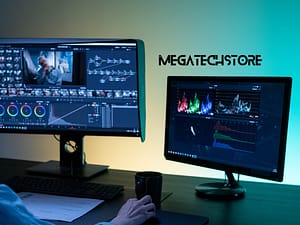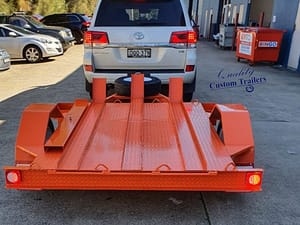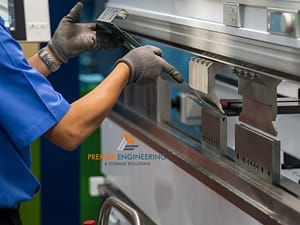Sneeze guards have become an essential fixture in food settings, primarily serving as a hygienic barrier between food and consumers. Their primary function is to protect food items on display from airborne contaminants, including bacteria and viruses, which can be spread through sneezing or coughing. In environments where food is displayed, such as buffets or salad bars, sneeze guards play a critical role in maintaining food safety and preventing the spread of illness.
Perspex as a Preferred Material
Perspex, a brand of acrylic, is often the material of choice for sneeze guards due to its clarity, durability, and ease of cleaning and maintenance. Unlike glass, Perspex is shatter-resistant, making it safer for use in high-traffic food service areas. Its transparent nature ensures that it does not obstruct visibility, allowing customers to clearly view food options while providing a protective barrier.
Design Considerations for Perspex Sneeze Guards in Food Businesses
Custom Designs for Different Food Outlets
The design of Perspex sneeze guards can vary significantly based on the specific needs of different food outlets. Factors such as the layout of the food display area, the type of food being served, and customer interaction patterns influence the design. For instance, a sneeze guard for a pizza display may have an open back for easy access by staff, while one for a self-service salad bar may need to encompass the food area more comprehensively.
Aesthetic and Functional Balance
While functionality is paramount, aesthetics also play a significant role in the design of Perspex sneeze guards. They need to blend seamlessly with the outlet’s décor and ambiance. This balance is achieved through thoughtful design choices in terms of shape, size, and the positioning of the sneeze guards. The goal is to ensure that while the sneeze guards serve their protective purpose, they also complement the overall aesthetic of the food business.
Applications in Various Food Industry Settings
Use in Restaurants
In restaurant settings, particularly those with buffet-style service, Perspex sneeze guards are a common sight. They are used to cover food on buffet lines, protecting them while allowing easy access. The design and placement of these guards are tailored to align with the restaurant’s service style and customer flow, ensuring functionality without disrupting the dining experience.
Implementation in Cafeterias and Food Courts
Cafeterias and food courts, often characterized by their high customer turnover and self-service formats, necessitate the use of sneeze guards extensively. In these settings, sneeze guards are designed to cover a wider area, providing protection for a variety of food items displayed. The focus is on durability and ease of cleaning, considering the heavy usage and diverse food types offered.
Hygiene and Food Safety Standards
Compliance with Health Regulations
Perspex sneeze guards are not just an accessory; they are an essential component in complying with health and safety regulations in the food industry. Most health departments and food safety authorities have specific guidelines regarding the use of sneeze guards to prevent food contamination. These regulations often specify the height, length, and placement of sneeze guards to ensure maximum effectiveness. Compliance with these standards is crucial for food businesses to maintain their operating licenses and avoid penalties.
Best Practices for Cleaning and Maintenance
Maintaining the cleanliness and clarity of Perspex sneeze guards is vital for both hygiene and visibility. Regular cleaning should be part of the daily routine. This involves wiping down the sneeze guards with a suitable cleaner that doesn’t damage the Perspex material. Avoid using abrasive materials or harsh chemicals that can scratch or cloud the surface. Regular maintenance checks for any damage or wear and timely repairs are also important to ensure ongoing effectiveness and compliance with health standards.
Customer Perception and Interaction
Impact on Customer Experience
The presence of sneeze guards can significantly impact customer perception. In the current health-conscious climate, customers are more likely to feel comfortable and reassured in environments where visible measures are taken to protect food safety. Well-designed and clean sneeze guards not only enhance the customer’s sense of safety but also reflect the establishment’s commitment to hygiene and quality standards.
Facilitating Customer Interaction
While sneeze guards serve a protective function, they should be designed to facilitate rather than hinder customer interaction. This includes considering factors like height and angle for easy viewing and accessibility of food items. Transparent, well-positioned sneeze guards can ensure that customers have a clear view of the food and can interact with service staff without communication barriers.
Innovations and Technological Advancements in Sneeze Guards
Latest Developments in Sneeze Guard Design
The design of sneeze guards is continually evolving to meet changing needs and preferences. Recent developments include adjustable and modular designs that can be easily reconfigured as per the changing layout of food displays. Another innovation is the use of anti-microbial coatings on Perspex materials, enhancing the hygiene factor by actively preventing the growth of bacteria and viruses on the surface.
Technological Integration
Technology is playing an increasingly important role in the functionality of sneeze guards. This includes the integration of touchless communication systems, such as QR codes for menus or ordering systems, incorporated directly into the sneeze guard design. Another advancement is the use of smart materials that can change transparency or display information, thereby enhancing customer interaction and experience.
Addressing Challenges and Solutions in Implementing Sneeze Guards
Overcoming Obstacles in Installation and Use
Implementing sneeze guards effectively involves navigating several challenges. Firstly, finding the right balance between visibility and protection can be complex. Sneeze guards need to be high and wide enough to protect food, yet not obstructive to customer interaction or visibility. Secondly, adapting them to fit various counter layouts and designs can be a hurdle. Solutions include opting for customizable sneeze guard models and seeking professional advice for optimal placement and installation.
Custom Solutions for Unique Challenges
Each food establishment has unique requirements based on its layout, customer flow, and type of service. Custom solutions, such as adjustable or modular sneeze guards, offer flexibility and can be tailored to specific needs. Additionally, for businesses with limited space, compact or hanging sneeze guard designs can provide protection without compromising on space or functionality.
Economic Considerations for Food Businesses
Cost-Benefit Analysis of Installing Sneeze Guards
For many food businesses, the decision to install sneeze guards is also a financial one. The initial cost must be weighed against long-term benefits. While there is an upfront investment, sneeze guards can lead to significant advantages. They enhance customer confidence, potentially increasing patronage. They also help avoid potential health code violations, which can be costly.
Return on Investment
The return on investment (ROI) for sneeze guards can be substantial. By providing a safer dining environment, businesses can maintain steady customer traffic, even in times of heightened health awareness. The longevity and low maintenance of Perspex sneeze guards also contribute to a favorable ROI, making them a wise investment for most food businesses.
Conclusion
Looking forward, the role of sneeze guards and similar protective measures in food safety is expected to grow and evolve. Future trends may include more advanced materials with enhanced protective properties, like self-cleaning or antimicrobial surfaces. Technology integration, such as digital displays or interactive elements on sneeze guards, might also become more common, offering businesses new ways to engage with customers while ensuring safety






